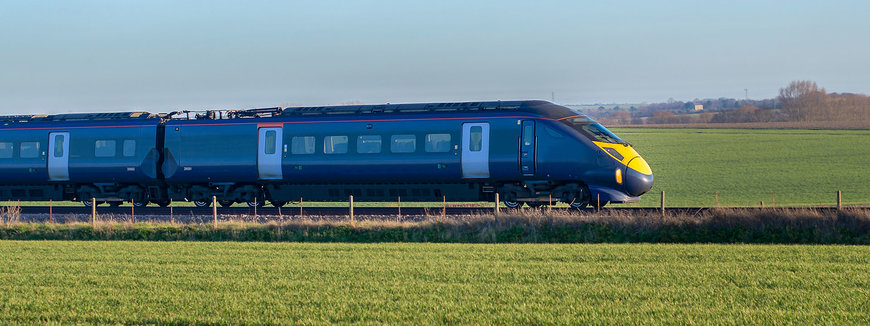railway-international.com
27
'21
Written on Modified on
Opinion: UK rail decarbonisation plans: “All the right words, but what is happening next?”
Last week, not one, but two significant documents for the UK rail sector were published by the Department for Transport (DfT).

One has been a long time coming. The Transport Decarbonisation Plan (TDP), covering not just rail but all national transportation, details how the government intends to combat greenhouse gas (GHG) output to stave off the inevitable climate impacts that will arise.
The second appeared with a little less fanfare. But the Rail Environmental Policy Statement (REPS) is equally crucial from an environmental perspective, focusing on wider sustainability topics than just carbon and climate, all of which will shape how the railway operates in a future version of the UK.
Common goals emerging
Firstly, both are welcome publications and are generally positive, showing a government that is starting to think a little more holistically about the challenges we face as a society. The silos of old remain in place, but now there is at least communication between them and some understanding that we all share common goals.
However, after a bright start and a welcome outlook, digging a little deeper reveals that there is still much to cement into place.
There are many good intentions, but little depth to them. Both papers quote the recent Williams-Shapps White Paper - along with future outputs from the industry such as the Integrated Rail Plan, which we are yet to see.
Starting with the TDP, much of what we’ve seen in Williams-Shapps is repeated here: electrification guided by the Traction Decarbonisation Network Strategy (but without any firm commitments or plans revealed), modal shift from road and air a priority, removing diesel-only by 2040 and modernising ticketing.
There are, however, some newer nuggets around freight, with a target for rail freight growth and incentives for low carbon traction thrown in. There is recognition that any shift of freight from road to rail will provide reductions in GHG outputs, hence supporting the modal shift argument.
It doesn’t quite feel like we have explored fundamental questions
But, whilst buried within the document, there is mention that Great British Railways will have a statutory duty to promote rail freight (which is commended), it doesn't quite feel like we have explored fundamental questions such as ‘What is the role and, hence, priorities of rail, in a sustainable post-COVID future?’.
I’m looking forward to seeing how some of these positive words are translated into positive actions.
Bold statements on decarbonising how we get our goods (“we’ll scale up and roll-out new technology, including hydrogen, embracing innovation and capitalising on new industrial opportunities”), the future role of hydrogen and how “we’ll use TDNS to guide work with partners across the rail sector to deliver an affordable programme of electrification” are all the right noises, but we really need to see the (low carbon) concrete plans that will underpin this.
Time to bring all the strands together
On to the REPS publication, where both TDP and Williams-Shapps are quoted throughout, but the document itself focuses most strongly on what Network Rail are already doing around sustainability and what they want to achieve.
There are some great examples of good work across the industry in air quality, decarbonisation, waste (and circular economy), land use for biodiversity and provision of renewable power generation, noise, water and social value. All of which demonstrates that much is already going on across many diverse areas, quietly and without a huge deal of overarching strategy and planning.
The work lying behind this, the Sustainable Rail Strategy, is the next step in that process: to tie all these strands together for a coherent set of guidance to industry on how we will achieve a sustainable future.
Much to improve
Rail is blessed with the good fortune that we are already a sustainable form of transport: low in carbon/GHG emissions; generally clean (although our old diesels need some work); providing good social value and sited on land within the UK which already has a good range of biodiversity and a high level of tree coverage (with many more being planted).
We have to get on this particular train very quickly
However, there is much to improve and the benefit that other sectors have in coming from behind us is that they have been looking at all of these things for a lot longer than rail, such that sustainability plans and accounting are a core component of everything they deliver. We need to catch up in that respect or face the prospect of being dumped from the 'sustainable transport' throne very quickly.
The necessary pace of change today is like no other time before and we have to get on this particular train very quickly, otherwise we risk being left at the station.
Of course, there are those who have been thinking about this for some time. At Ricardo we’ve been developing sustainability strategies for over 25 years together with colleagues in our Energy & Environment team. Conducting GHG and climate impact assessments since the 1990s, we’ve supported sectors, industries, governments and multi-national organisations throughout their sustainability journeys. We’d love to do the same for the rail industry.
Our Automotive & Industrial team have been developing breakthrough new technology for the world’s transport industries since 1915, always following Sir Harry Ricardo’s guiding ethos of “maximising efficiency and minimising waste” which means that we don’t just talk about targets, we know what it takes to realise them.
As Dashanne Stoke, an American civil rights activist once said, “If your actions don’t live up to your words, you have nothing to say.”
www.ricardo.com

